Three Centuries of Boston Light
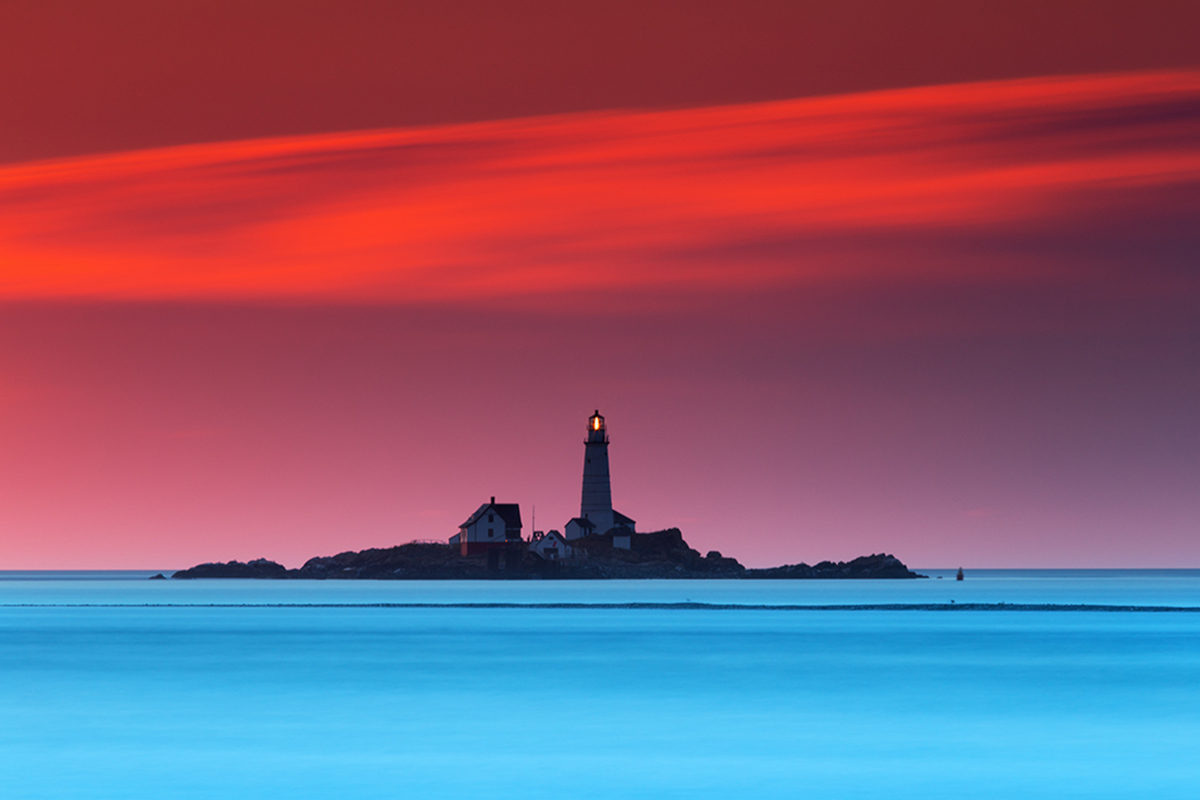
Photo by Greg DuBois
In dense fog and heavy snow, a singular beaming light guides the way through Boston Harbor. Since 1716, rickety schooners and hefty container ships alike have looked to Boston Light for a helping hand, and the aging lighthouse station has never let them down.
This week, the first lighthouse in the United States will celebrate its 300th birthday—with September 14 marking the anniversary of the tower’s inaugural illumination. To honor the iconic structure, here’s a look back at Boston Light’s history, its giant light bulb, and its function today.
A Brief History
In gift shops around the city, picture-perfect postcards of Boston Light rest on those familiar spinning wire racks. Some feature the lighthouse backlit by a breathtaking orange sunset, and others depict the brightest, clearest days on the harbor. But none of them show fire, explosions, or mayhem.
To understand the story of Boston Light, it’s important to know there were plenty of those three things. And one of the region’s most noted historians, Winthrop’s Edward Rowe Snow, chronicled those tales. In his more than 40 books about New England’s maritime history (all published between the 1930s and 1980s), he penned the origins of the lighthouse.
Before Boston’s beacon was built, ships were forced to squeeze their way into the harbor through the one-mile opening between Hull and Little Brewster Island without any navigational aids. The channel presented a long list of challenges: almost invisible outer ledges, whipping winds, blinding fog, and in winter, heavy snow. It brought watery ends to one-too-many ships that were only a few short miles from safety.
Snow writes that Bostonians decided to put an end to the excessive mourning of lives lost in shipwrecks in the harbor. A group of local merchants formed a long-awaited petition: to erect a lighthouse station.
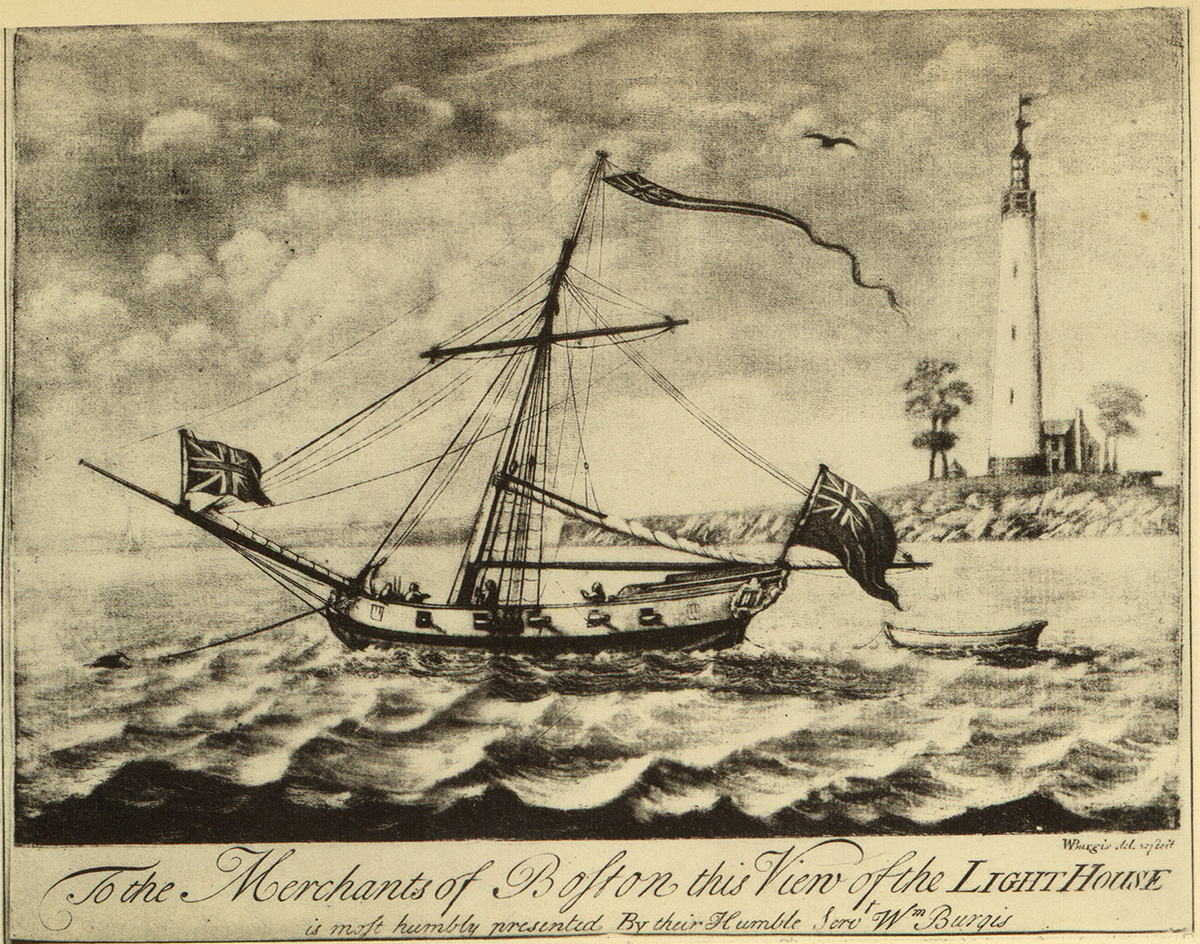
Photo via Wikimedia Commons
Sailors’ prayers were answered on September 14, 1716, when Little Brewster Island’s newly built Boston Light was first lit. Along with the lighthouse, a wharf, keeper’s house, and barn were constructed. The 60-foot granite rubble stone tower signaled progress—it would be almost half a century before New York would build its first lighthouse.
In the years to follow, lighthouse keepers and their families would make homes out of the rocky three acres of Little Brewster, condensing to one and a half acres at high tide. In the beginning, there were tragedies. Drownings and storm casualties shrouded the tower in despair. (The lighthouse’s first keeper, his wife, daughter, and servants drowned in a rowboat near the island’s shore as his other daughter and a friend watched in horror.) But as the years went on, the misfortunes became fewer. The lighthouse was going on a 60-year streak of guiding the harbor’s many ships when the American Revolution reared its head—as did the fire, explosions, and mayhem.
In 1776, the British blew up Boston Light. Control of the tower had bounced back and forth between the Redcoats and the Patriots, but as the British finally evacuated Boston, they set off a powder keg at the base of the tower, destroying the beloved beacon.
At the conclusion of the war, the lighthouse was built again in 1783. Despite a series of destructive fires, the same tower from 1783 stands today. However, the 1776 explosion modified the lighthouse’s history—while it was the first lighthouse built in the country, Boston Light is not currently the oldest existing lighthouse. That title goes to Sandy Hook Light in New Jersey, built in 1764. Since the site and surrounding buildings of Boston Light have remained, it does claim the title of the oldest existing lighthouse station.
Still, 300 years of existence is an impressive feat. Plenty of preserved original features remain at the station, even if some aren’t in use anymore. As one might guess, the lighthouse doesn’t employ the same technologies of 1783. Yet, even with the advances of GPS navigation for modern-day sailors, the light remains an invaluable harbor staple.
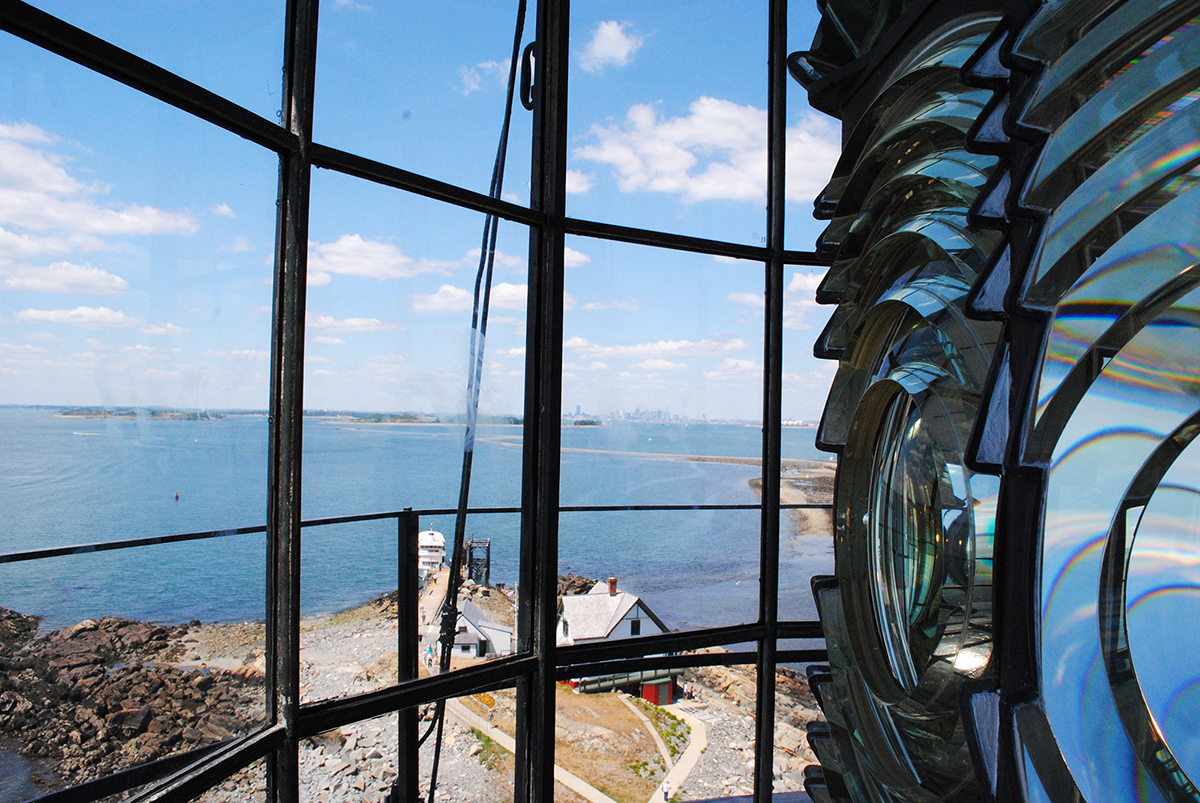
Photo by Madeline Bilis
How It Works
The lighthouse’s first keeper, George Worthylake, lit the lantern that produced Boston Light’s initial glow on that fateful September 14. In the years after, the station continued to use candles, and then fish oil lamps. It wasn’t until 1811 that a revolving mechanism was installed to project the tower’s signature flashing light. According to Images of America: Boston Light, the mechanism had multiple lamps and reflectors within a chandelier. The introduction of the flashing light proved to make harbor navigation easier.
By the mid-1850s, technological advances allowed for the light to burn more brightly while using less fuel oil. In 1855, the lighthouse had 16 Argand lamps (read: more advanced oil lamps) installed. Four years later, in 1859, Boston Light’s existing Fresnel lens was introduced. Specifically developed for lighthouses, the Fresnel lens was created from crystal and brass. The 4,000-pound contraption was hoisted to the top of the tower, where 336 prisms and 12 circular lenses rotate, continuing to create light through reflection and refraction. The lens was originally powered by oil lamps and required the keeper to hand-wind it every four hours.
Today, the lens receives electricity through an underwater power line that was installed in 1957, and rotates with a motor. The light flashes every 10 seconds.

Inside Boston Light, Sally Snowman looks toward the ladder leading to the top of the lighthouse. / Photo by Madeline Bilis
The Keeper
“I hold the last Coast Guard lightkeeper position in the entire country,” explains Dr. Sally R. Snowman, the live-in caretaker of Boston Light, and the first female appointed keeper in Coast Guard history.
In 1989, a law was passed mandating that the light be permanently attended, and in 2003, Snowman headed out to sea after years of volunteering in the Coast Guard auxiliary. She lives on Little Brewster Island with her husband, Jay Thomson. Together they take care of the lighthouse, working on day-to-day maintenance tasks and educating the public through tours.
Snowman doesn’t actually tend to the light itself or the island’s fog signal. Boston Light was automated in 1998. Her main job is to be a public steward, and she does so with her own unique flair—whether that’s baking cookies before tours or talking about her one-of-a-kind outfit.
When interacting with visitors, Snowman dons a long dress, an apron, and a bonnet, imitating fashions of the year 1783. She explains her costume helps her remind guests—and herself—that the lighthouse dates back to when the new tower was constructed, and not 1716, when the station was first built.
The station includes several buildings in addition to the lighthouse. There’s a boat house, an oil house, the keeper’s house, the cistern building, and a fog signal building. Snowman can rattle off the components of the station in quick succession. A true history buff, she knows all the nooks and crannies of the place better than anyone else.
One little-known fact? There’s graffiti on the island. Snowman talks about the vandalism in reference to signatures etched in Boston Light’s granite. It’s a tradition for keepers to engrave their names into the stone. The oldest carved name dates back to 1768.
“I just like to take a look at that and touch it,” Snowman says.
She adds the 1768 inscription is the oldest name that has been found, meaning there could be others waiting to be discovered. Touching the names and the oldest parts of the structure connects Snowman to the past.
“The first 13 to 14 feet of the tower is original,” says Snowman. “I actually touch it quite frequently.”
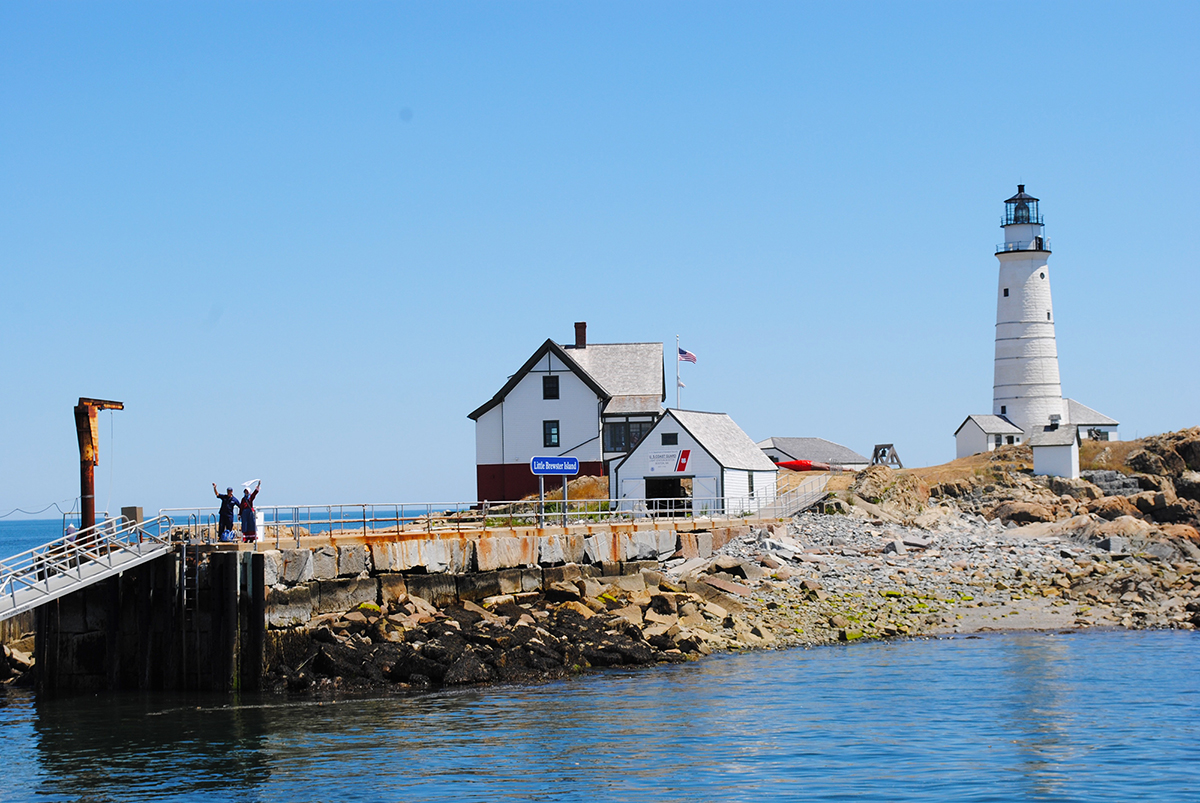
Sally Snowman and Jay Thomson wave from Little Brewster Island. / Photo by Madeline Bilis
Boston Light , By the Numbers
Some interesting stats from Dr. Sally Snowman.
Boston Light was built in 1716.
Originally, it was 60 feet tall.
Then it was blown up in 1776.
In 1783, it was rebuilt to 75 feet tall.
The first 9 to 14 feet of the tower are original.
The lighthouse’s Fresnel lens was installed in 1859. It’s 11 feet tall.
During installation, the tower was raised to 89 feet, which is its current height.
The walls are 7 feet thick at the bottom.
At the top, they’re 2½ feet thick (hence the conical shape).
You have to climb 76 stairs and 2 ladders to get to the top.
The Fresnel lens has 336 individual prisms with 12 bull’s-eyes.
The lens weighs 4,000 pounds.
It was electrified in 1948.
Boston Light is visible from 27 miles away on a clear night.
The light flashes every 10 seconds.
Thomas Ball served at the lighthouse for 41 years, the longest of any keeper.
It’s housed 70 keepers since 1716.
69 of those keepers were men.
1 is a woman. That’s Sally Snowman.
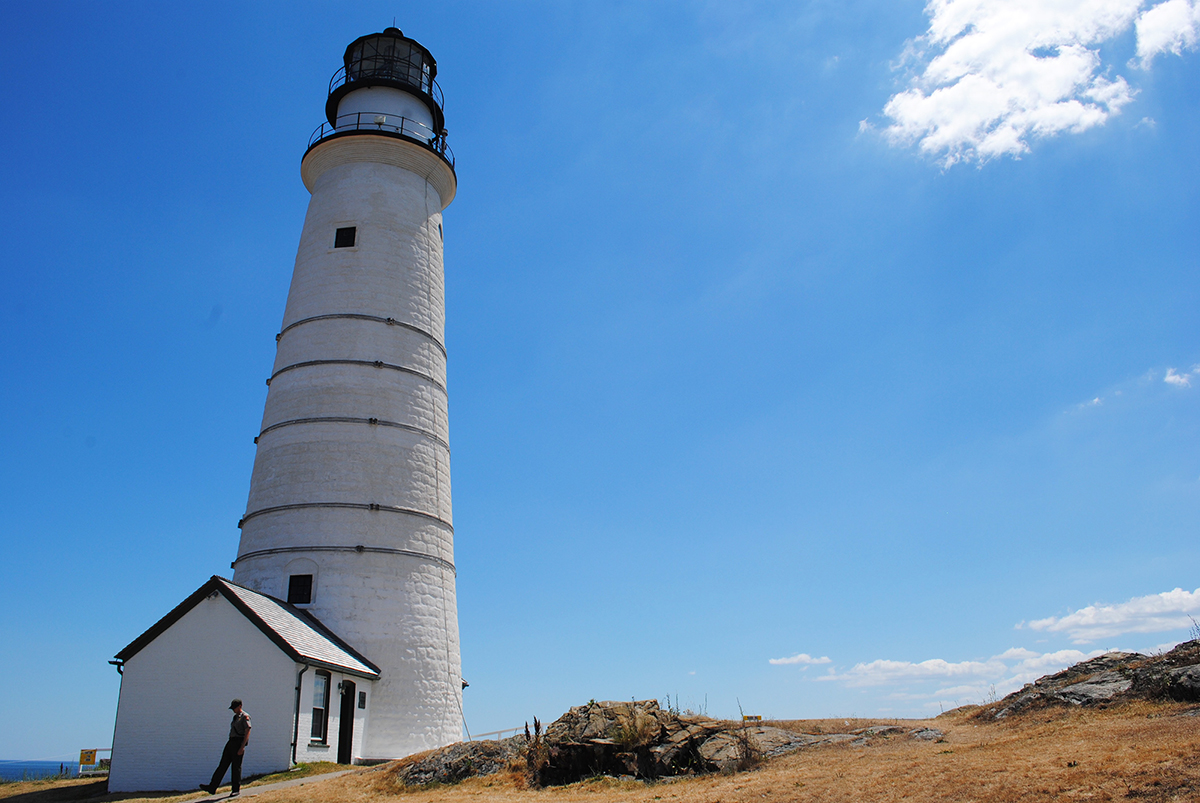
Photo by Madeline Bilis
Boston Light Today
A 1700s-era seafarer passing by Boston Light this week may not notice many differences. Although it’s been through many repairs and iterations, the construction looks about the same way it did when it was first built 300 years ago, even if its surroundings don’t.
“This is the constant in Boston,” says Giles Parker, superintendent of the Boston Harbor Islands National Recreation Area. “The Civil War soldiers going in and out of Fort Warren would have seen it.”
He says that through the years, while the islands have changed and the skyline has transformed, the lighthouse has remained more or less the same (even with the explosion and all those fires).
The lighthouse has been spruced up dozens of times since its establishment. Most recently, in 2014, the landmark was structurally reinforced in a $1.5 million, yearlong renovation by the Coast Guard. A new roof was placed on the keeper’s house, new windows were installed in several outbuildings, and most structures got a fresh coat of paint. This year, the island received a $30,000 donation from Lands’ End to build a new boathouse, which ushers in dozens of passengers eager to tour the tower in the summertime.
“Boston Light is one of the most iconic symbols of Boston,” explains Kathy Abbott. She’s the CEO of nonprofit Boston Harbor Now, an advocacy organization that seeks to connect the harbor islands and Boston’s waterfront.
The building represents our past in terms of resilience and perseverance, Abbott says.
“It’s also recognized as a beacon,” she says. “A beacon representing the future.”
When equipped with a sturdy 157-year-old Fresnel lens, the future seems pretty bright.
A Boston Light anniversary ceremony will take place at Long Wharf on September 14 at 10 a.m., for more information about celebrations, visit bostonlight300.us.


